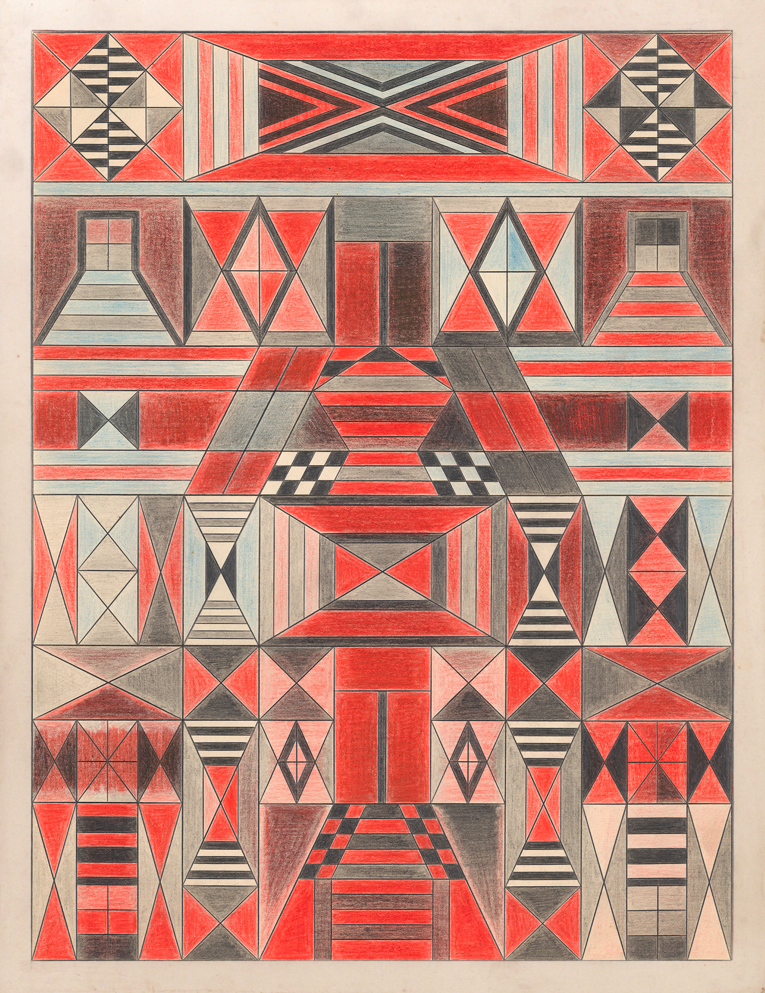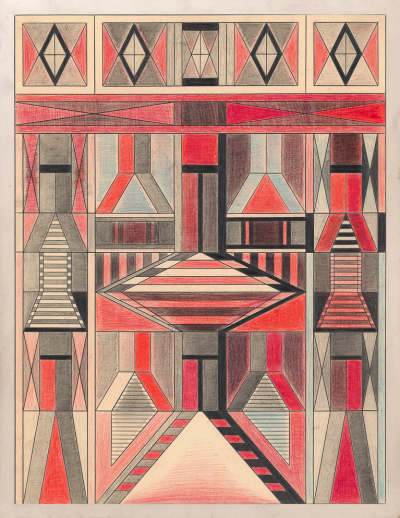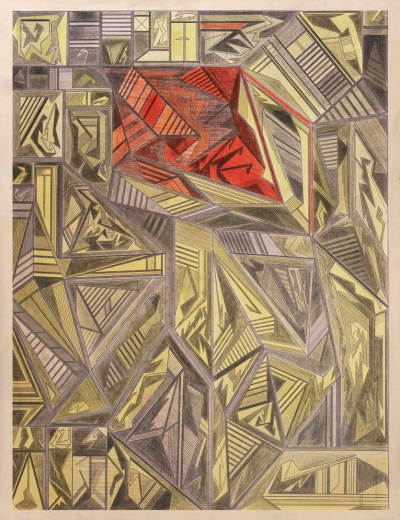Domingo Guccione
Domingo Guccione (1898 – 1966) was born in Buenos Aires to Italian parents. He was a trained classical musician, working as a concert guitarist and instructor to many students, but was never exposed to visual art—and in fact suffered from color blindness. He drew mostly in private and claimed to be channeling a mysterious force that took a hold of him in bouts of creative energy—where his body and mind were not his own. Accordingly, Guccione could (or would) not explain his finished works and in turn ask viewers what they saw in them.
Guccione did not sketch his drawings, working quickly and with a minimal range of materials; thick sheets of paper, graphite, colored pencils, and a straight piece of wood, about 4” long, with no measurement markings. The 222 works that he left behind, which were produced between 1930 and 1955 and have never been seen outside of his immediate family, are compact kaleidoscopic arrangements where geometric patterns intertwine with irregular linear shapes. They are both deeply abstract and reminiscent of futuristic architectural landscapes; of buildings and labyrinths that fluctuate between flatness and three-dimensionality, interweaving densely packed color with subtle shadings.



